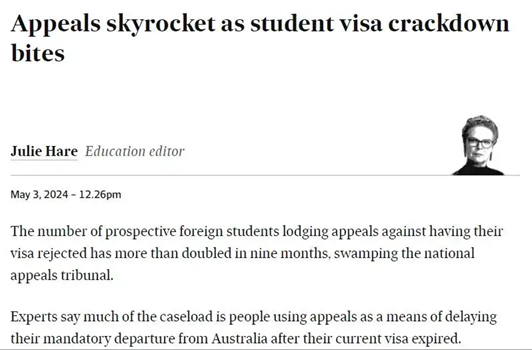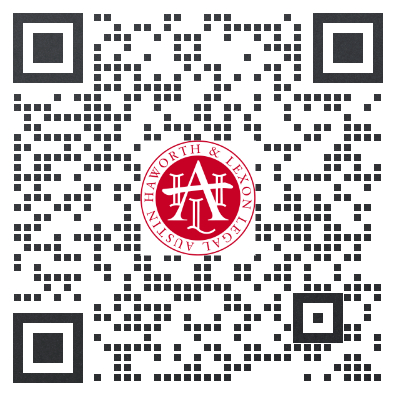Australia’s New Visa Appeals Transformation: The Transition from AAT to ART and Its Impact on Visa Applicants
On 14 October 2024, Australia officially launched the Administrative Review Tribunal (ART), fully replacing the Administrative Appeals Tribunal (AAT). This major transition not only directly affects the visa application process but also represents a pivotal reform impacting thousands of immigration applicants. To understand its significance, consider the story of Xiao Wang, a student whose visa was refused due to a misunderstanding. In the past, he might have waited months or even longer for a response from the AAT. However, under the new ART system, his wait time will be considerably shorter. What does this reform entail? Let’s explore its implications.

1. Background and Purpose of ART’s Establishment
1.1 Background and Need
Australia’s visa system has faced criticism in recent years due to significant backlogs. For instance, Ali from Iran waited nearly 18 months for a hearing with the AAT after her spouse visa was refused, almost missing her chance for family reunification. ART was established to address such cases, streamlining processes to provide applicants with faster results.
1.2 Goals of the Reform
The ART reform aims to improve efficiency and simplify procedures, including:
Fair and Just Review: Ensuring applicants have a reasonable opportunity for a fair decision;
Reduced Waiting Time: Accelerating the review process through digital management and simplified procedures;
Enhanced Transparency: Offering clear tracking and feedback mechanisms at each stage of the process.
2. Key Reform Measures in ART
2.1 Support from the Administrative Review Council
To ensure ART maintains high standards of fairness and impartiality, the Administrative Review Council (ARC) has been established. ARC will handle potential disputes that arise during appeals. For example, if an immigration applicant believes their ties to Australia were not fairly considered during their appeal, ARC can help ensure these factors are not overlooked.
2.2 Introduction of the Guidance and Appeals Panel
A more detailed appeals mechanism, the Guidance and Appeals Panel (GAP), has been introduced to handle complex or unclear appeal cases. For example, Ravi (pseudonym) from India appealed a visa rejection to the AAT only to find that the initial decision overlooked crucial evidence due to a technical error. In cases like this, GAP can re-evaluate the case to ensure Ravi’s application receives a thorough review.
3. Direct Impact of ART Reform on Visa Applicants
3.1 Automatic Transfer of Cases
Pending AAT cases filed before 14 October 2024 will automatically transfer to ART without requiring a new application. For cases with decisions already made, applicants still have 28 to 35 days to seek further review with the Federal Court if dissatisfied. This mechanism significantly reduces applicants' burden. For instance, Xiao Zhang, whose student visa was cancelled, no longer needs to reapply but can expect a prompt ART follow-up instead.
3.2 Streamlined Process and Adjusted Fees
The ART reform has made visa appeals more cost-effective and convenient. By simplifying processes, applicants can access more efficient reviews without incurring additional costs. For example, Julia (pseudonym), a skilled migrant from the UK, was able to apply for a review and submit documents online—an improvement over the previous need for lawyer consultations and in-person submissions.
3.3 Clearer Timelines for Reviews
The new system sets clear and transparent timelines for each stage of the process. Bruce, an employer-sponsored visa applicant from a remote area, had his application refused due to his employer’s financial difficulties during the pandemic. Through ART, Bruce now has a clearer expectation for the timeline of his review, avoiding the uncertainty that often accompanied AAT appeals.
4. Effective Strategies for Applicants Navigating the ART System
4.1 Requesting Review Documents for Detailed Information
ART offers a more accessible review document request service for visa applicants. By obtaining review documents, applicants can understand the Home Affairs Department’s decision rationale and consult immigration lawyers to prepare for appeals. For instance, after Xiao Li’s working holiday visa expired, she faced deportation. Thanks to ART’s review document service, her lawyer quickly identified key issues and prepared effective appeal materials.
4.2 Timely Action on Appeal Deadlines
Under the ART system, adhering to appeal timelines is crucial. For example, Chen, whose partner visa was refused, promptly applied for a Federal Court review after ART’s decision, securing additional time to stay legally in Australia. It is essential to act within 28 to 35 days of receiving ART’s notification to either continue the appeal or explore other legal options.
4.3 Seeking Professional Immigration Lawyer Assistance
While the ART system has simplified procedures, legal matters in appeals remain complex. Immigration lawyers play a vital role in interpreting and analysing cases. For example, Mark (pseudonym), who was rejected due to insufficient points for skilled migration, benefited from his lawyer’s assessment, who provided a more compelling argument during the ART appeal, increasing Mark’s chances of success.
The establishment of ART marks a new phase in Australia’s visa review process. For visa applicants, it provides a chance for faster, fairer review but also involves tighter timelines. By understanding ART’s procedures, effectively using review documents, and seeking professional legal support, applicants can better protect their rights under the new system.



 1300 91 66 77
1300 91 66 77







 HOME
HOME


